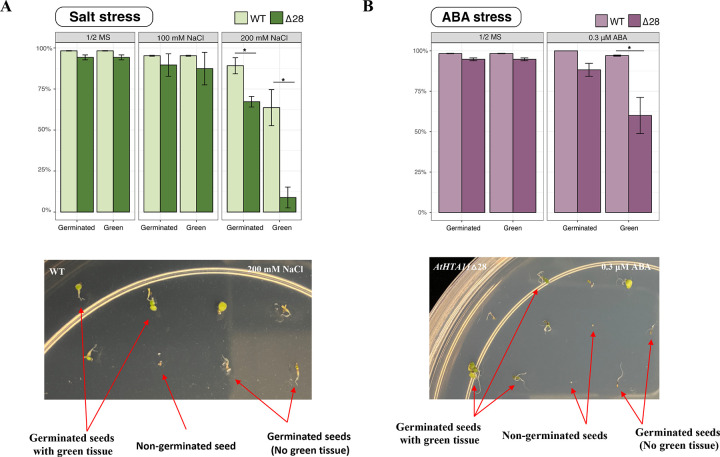Figure 6. N-terminal truncated AtHTA11Δ28 plants are hypersensitive to high salt and ABA stress conditions when compared to WT plants.
Eleven-day-old seedlings grown on ½ MS agar plates and plates supplemented with either 100 mM or 200 mM NaCl (A) or supplemented with 0.3 μM Abscisic acid (ABA) (B), were characterized for their ability to germinate and to produce green tissue. (A) Germination rates for seeds undergoing medium salt stress (100 mM NaCl), and high salt stress (200mM NaCl) compared to normal growth conditions (½ MS). Germination rates from two independent germination experiments are stratified into two categories, “Germinated” which indicates any germinated seed with root or shoot tissue, and “Green” which indicates any germinated seed with green tissue (see bottom photo for phenotypic key). On ½ MS and medium salt stress, AtHTA11Δ28 (Δ28) and WT plants have equivalent germination percentages. At high salt stress, D28 plants have significantly less germination (p=0.034) and green tissue (p=0.026) when compared to WT plants (*student’s t-test, p<0.05). (B) bscisic Acid (ABA) stress (0.3 μM) compared to normal growth conditions (½ MS). Germination rates from two independent germination experiments are stratified into two categories, “Germinated” which indicates any germinated seed with root or shoot tissue, and “Green” which indicates any germinated seed with green tissue (see bottom photo for phenotypic key). AtHTA11Δ28 (Δ28) and WT have equivalent germination rates on ½ MS media, and there is also no statistically significant difference in germination rate on ABA-containing media. However, Δ28 has significantly less germinated seeds with green tissue (p=0.042) on ABA-containing media compared to WT (*student’s t-test, p<0.05).

